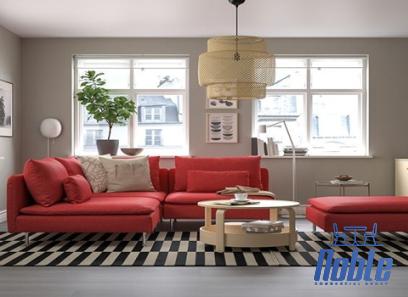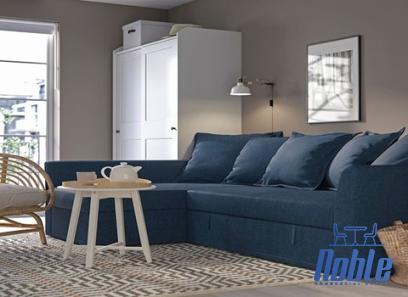The matt Panton chair schwarz is an iconic design found in homes, museums, and restaurants around the world. Also known as the S chair for its cantilevered silhouette, Verner Panton’s chair of the same name revolutionized modern furniture making.
Read on to find out everything there is to know about this eye-catching chair and the designer behind it.
behind the design
Verner Panton first designed the Panton Chair in 1959 with the renowned Vitra. Among other things, the plastic cantilever chair was an industry first as one of the most avant-garde designs of the mid-20th century.
Piles of neatly stacked plastic bins inspired Pantone to design a stackable plastic chair. He began sketching in the 1950s, rejecting wood, so the designs immediately stood out. At that time, wood was one of the favorite materials of Pantone’s contemporaries.
The distinctive silhouette of the chair sets it apart from the more popular designs of the time. Featured in the Danish design magazine Mobilia in 1976, the Panton chair caused a sensation and has since become a staple of Pop Art interiors.
The following year, the Panton chair appeared in photo shoots and editorial campaigns around the world. For example, the 1995 British Vogue shoot featured Kate Moss sitting nude.
Color selection should not be a gamble. It must be a conscious decision. Colors have meaning and function.
How to do
Given that Verner Panton’s goal was to create a light and comfortable chair from a single piece of plastic, it is not surprising that it took him several years to find the right manufacturer. Finally teaming up with Vitra in 1963, Pantone and major manufacturers developed the Pantone chair over the next four years.
Vitra’s original design was made from fiberglass, but the current model is made from injection molded plastic. A state-of-the-art machine casts each chair using a 10-ton mold and heated thermoplastic resin. Once cooled, specialists hand-finish each Panton chair so that each one has the most sophisticated finish possible.
About the designer
Verner Panton, one of the mid-century designers who embraced color with open arms, remains a revered name today. His unique sense of color, form, and light has inspired designs such as the Pantone chair, the Pantera table lamp, and the Heart Cone chair.
After studying architecture at the Academy of Fine Arts in Copenhagen, Verner Panton’s career began working for the firm of renowned designer Arne Jacobsen. After working for Master for just two years, Pantone set up his own studio.
The main goal of my work is to make people use their imagination and make their environment more exciting.
His work differed greatly from that of his Scandinavian contemporaries, thanks to his fascination with high technology. In fact, it is this curiosity that led to the Panton chair, the world’s first single-foam injection molded plastic chair.
Experimenting with cutting-edge technologies, techniques, and materials allowed Pantone to break from the norm and truly experiment with design. He, too, was equally fascinated by colors. Many of his most famous designs feature bright primary colors, such as the Panton chair.
Today, countless museums around the world proudly display his work. Notable institutions include MoMA in New York, the Danish Design and Museum in Copenhagen, and the Design Museum in London. Vintage Pantone pieces can bring in large sums of money when sold and are incredibly popular.
Panton Chair: the first one-piece chair
The Panton Chair is considered “the first chair made from a single piece” and is not only one of the most innovative furniture designs of the 20th century due to its hydrodynamics. Initially, Danish designer Verner Panton’s sculptural chair was made of fiberglass-reinforced polyester, but partial production by hand was too expensive, so it was soon replaced by cheaper polyester. Acceptance in terms of quality.
Design Classic has been marketed since 1990 under the name of Pantone Chair Classic in Vitra’s original and reliable solid plastic with a high gloss finish. More recently, Verner Panton finally approved a matte finish version of matrix polypropylene that allows for the highest quality at an affordable price. In addition, Vitra has developed Pantone Junior, a children’s version of its popular plastic chair with child-friendly colors and proportions. But whatever its shape, the ergonomic cantilever chair, with its unique concave curvature, is as much a legendary landmark of the 1960s as it is a guarantor of modern style.
Development of the Panton chair
Danish designer Verner Panton had a vision of a free-swinging plastic chair in the late 1950s. Although at first, there was no way to manufacture such a cantilever under the given technical conditions, Diebold persuaded Willie Verbaum to give Pantone’s vision a chance. And after lots of years of researching, experimentation, and lateral thinking, we had a hand-laminated fiberglass-reinforced polyester prototype that was used to determine the final shape of the chair. Finally, in 1967, 150 Panton chairs were produced, later made of cold-pressed fiberglass-reinforced polyester. The first cantilever chair made from a solid piece of plastic was born.
belief in ideas
Vitra may have been successful in making the Panton chair, but the expensive and elaborate process simply couldn’t keep up with the demand for the sensational chair. Thus, the experimentation continued until 1968, when the latest version of the Panton chair was manufactured with rigid polyurethane foam. Now we can produce more. However, it had to be elaborately reworked by hand and even later developed thermoplastic materials were not satisfactory. By its very nature, this meant that Pantone changed too many designs while also not being sufficiently weather-resistant or age-resistant. As a result, production was discontinued in 1979. It was not until 1990 that Vitra tried something new and created the Panton chair with unbreakable rigid polyurethane foam. This is a solution that is now possible thanks to advanced plastic technology. Thus, Pantone’s dream of a high-quality, industrially manufactured plastic chair, which died shortly before the chair was introduced in 1999, finally came true. Under his name, Vitra continued to produce the Pantone chair and has since produced a range of exceptional chairs. Legendary Chair Edition.
Panton Chair – Vitra Original
Furniture designs are original only if they have been produced by the manufacturer with the permission of the respective designer. This is the legal basis. In the case of the Panton chair, Vitra not only received the explicit permission of Verner Panton but also co-developed the project. The Danish designer turned to Vitra in the early 1960s, finding no manufacturer capable of implementing his designs. Vitra founder Willy Verbaum didn’t see the potential either, but his son Rolf took up the challenge and set about finding the right materials and manufacturing processes, and after much experimentation, the Panton chair was launched in 1969. It uses rigid polyurethane foam. “Without Rolf, there would be no Panton Chair.” With these descriptions, Verner Panton himself makes it clear how important and personal the connection between creator and designer is in his original work. As a unique Vitra original, the Panton Chair is also characterized by the fact that over the years, the object has been reworked, always in close collaboration with Verner Panton or his descendants. Today the Panton Chair is manufactured in lacquered hard foam as the Panton Chair Classic and since 1999 as the Panton Chair in colored polypropylene. Thanks to years of experience, Vitra guarantees the processing of only high-quality raw materials from the EU, which represent the highest quality and reliability.










Your comment submitted.